For centuries, resistance movements have shaped human history. They have challenged oppressive regimes and occupying forces. These movements are groups of people working together to fight against governments or invaders.
In the Philippines, resistance movements have been key in the country’s history. They show how important these efforts are in fighting for freedom and democracy.
The history of resistance is complex. It includes many types of resistance, like armed and spiritual movements. These efforts use different tactics to achieve their goals.
The term “resistance” became common during World War II. Today, resistance movements keep evolving. They use new technologies and strategies to challenge oppressive regimes and push for change.
The underground resistance movement is a big part of this history. It focuses on fighting against invading forces and oppressive governments.
Key Takeaways
- A resistance movement is an organized effort by a portion of the civil population to resist the legally established government or an occupying power.
- Resistance movements have been a part of human history for centuries, with various forms of resistance emerging in response to different forms of oppression.
- The underground resistance movement has played a significant role in promoting freedom and democracy, with its focus on organized opposition to invading forces and oppressive governments.
- Understanding the development of resistance movements is crucial in analyzing their impact on sociopolitical landscapes.
- Resistance movements continue to evolve, incorporating new technologies and strategies to challenge oppressive regimes and promote social change.
- The concept of resistance is closely tied to the idea of freedom and democracy, with many resistance movements seeking to promote these values in the face of oppression.
- The history of resistance movements is complex and multifaceted, with various forms of resistance emerging in response to different forms of oppression.
Origins of Underground Resistance Movements
Underground resistance movements started due to historical events and social injustices. They often formed against oppressive regimes, occupation, and human rights abuses. The organized resistance during World War II, for instance, helped disrupt the Axis powers and led to their defeat.
Notable examples include the French Resistance, the Polish Home Army, and the Yugoslav Partisans. These groups showed bravery, cunning, and determination to fight against huge odds. Their origins came from nationalistic feelings, ideological beliefs, and a need to protect themselves.
- Social and economic injustices
- Occupation and oppression
- Nationalistic sentiment and ideological conviction
- Human rights violations and atrocities
Learning about the origins and historical precedents of these movements helps us understand human conflict. The organized resistance movements show the human spirit’s strength, courage, and defiance against adversity.
The Philosophy Behind Underground Resistance
Underground resistance movements are based on different ideas like nationalism, communism, and liberalism. They want freedom, to decide for themselves, and to change society. The underground resistance believes in fighting against unfair systems and raising awareness.
History shows that resistance groups have various ideologies. For example, the Polish resistance wanted freedom and control over their lives. In Detroit, “Mad” Mike Banks and Jeff Mills led a movement against big corporations. They aimed to wake people up and bring about change.
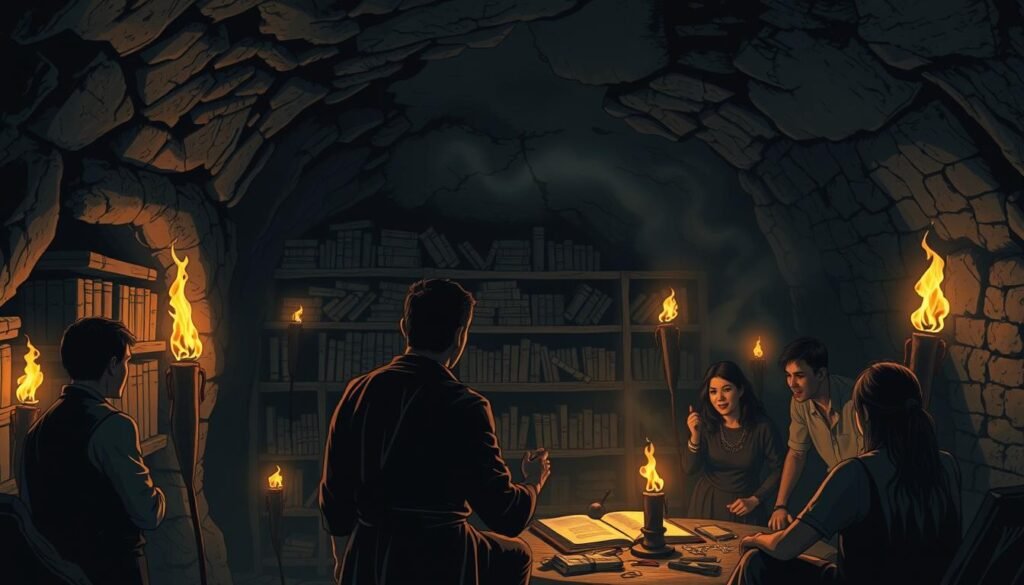
The philosophy of underground resistance is seen in their music and art. Their music talks about Detroit’s tough times during the Reagan era. It shows the power of speaking out and working together as a community. Learning about the ideology and philosophy of these movements helps us understand the push for change and activism.
Organizational Structure and Operations
Underground resistance movements need a strong organizational structure to succeed. A well-organized group is key to reaching its goals. There are two main types of groups: those that work openly and those that keep their work secret.
Secret groups must be very careful to stay hidden. They use special ways to talk and recruit people without being caught. Open groups, on the other hand, focus on working with the community and being seen.
Some important features of secret groups include:
- They have small, separate teams to keep things hidden.
- They use secret codes and encrypted messages.
- They carefully choose who to recruit, keeping things quiet.
- They have leaders who help make decisions and keep things running smoothly.
These features help secret groups stay safe and effective. Knowing how these groups work helps us understand the challenges they face.

For secret groups, a good structure and operations are vital. By having a clear chain of command, secure ways to communicate, and smart recruitment, they can reach their goals safely.
Role of Underground Resistance in World War II
The underground resistance was key in World War II. It helped the war effort and changed the war’s outcome. In France, groups like the Maquis fought against the Germans through guerrilla warfare and sabotage.
The Vercors Uprising in July 1944 was a major action. It happened just before Paris was freed. The resistance also gave military intelligence and damaged power grids and transport to help the Allies.
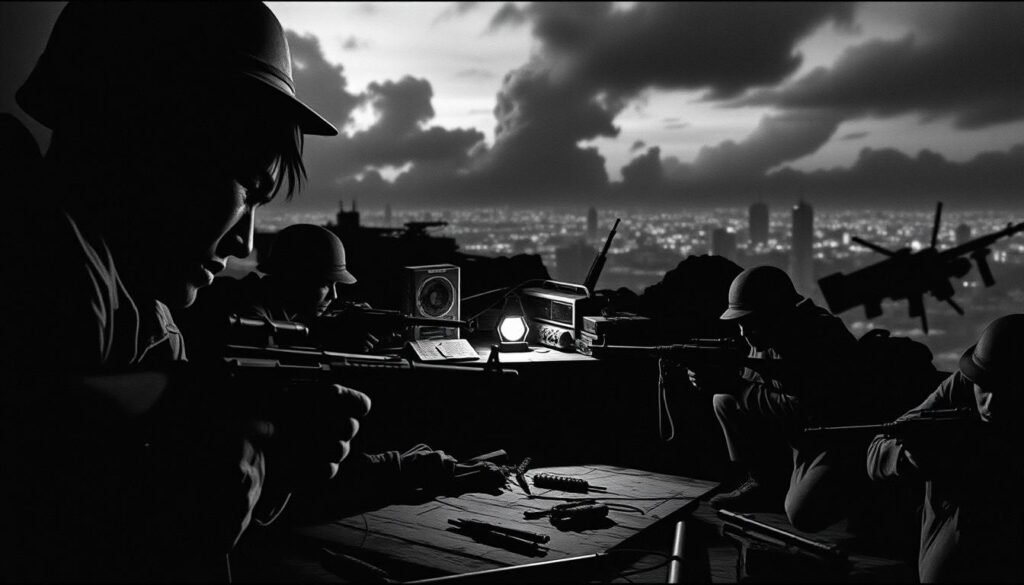
The resistance wasn’t just in France; it was across Europe. In Poland, it disrupted German supply lines and gave the Allies important information. The underground resistance’s role was vital and greatly influenced the war’s end.
Some key parts of the underground resistance’s role include:
* Disrupting enemy supply lines and communication networks
* Providing intelligence to the Allies
* Engaging in guerrilla warfare and sabotage
* Supporting the liberation of occupied territories
The underground resistance’s efforts were crucial for the Allied victory in World War II.
The Filipino Underground Resistance Movement
The Filipino resistance movement was key in the country’s history, especially during the Japanese occupation. It formed key organizations to fight the Japanese. The Hukbalahap, a communist-led group, was one of these.
Despite facing many challenges, like limited resources and harsh Japanese treatment, the movement kept going. Its efforts helped free the country. The Filipino resistance shows the bravery and strength of the Filipino people.
The resistance used guerrilla warfare, sabotage, and gathering intelligence. They worked with groups like the United States Armed Forces in the Far East. Their victories were big, and the Allies took notice.
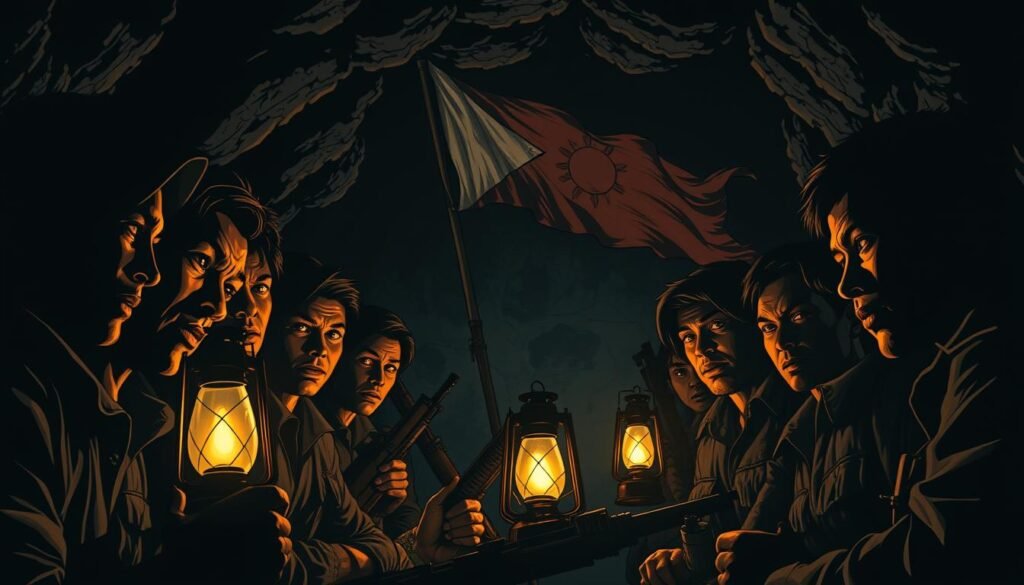
The Filipino resistance during the Japanese occupation is a vital part of the country’s history. It inspires Filipinos today. The movement’s focus on unity, courage, and determination reminds us of the need to stand up against oppression and fight for freedom.
Technologies and Tactics
Underground resistance movements use technologies and tactics to reach their goals. They often use guerrilla warfare with little resources. This approach is unconventional.
They employ tactics like sabotage, ambushes, and raids. They also use social media and digital tools. These help spread information, recruit, and plan operations.
In cities, guerrilla warfare works well. Movements blend in and surprise their foes. The Polish Home Army in Warsaw during World War II is a great example.
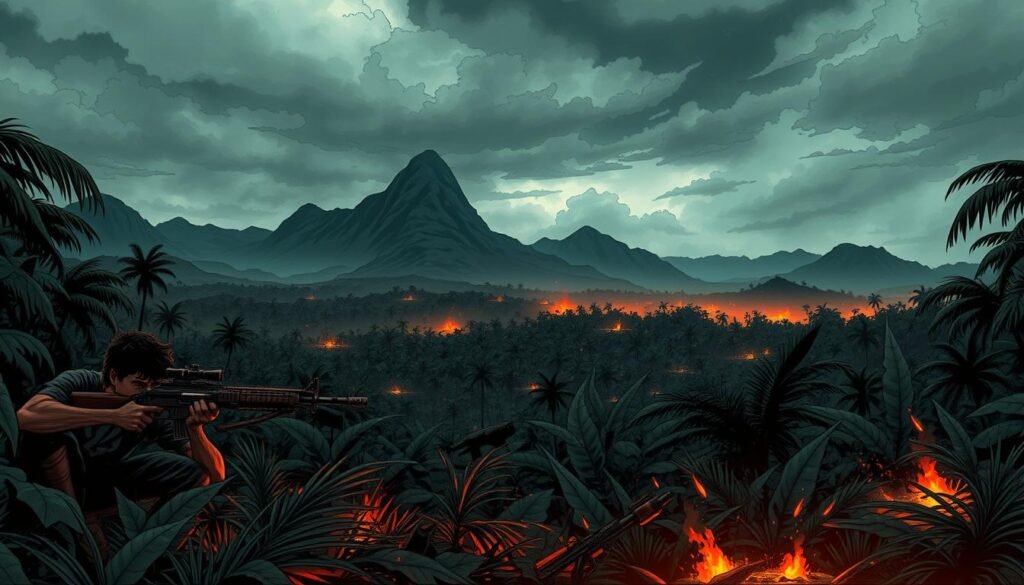
Success in these movements comes from adapting and using technologies and tactics well. Understanding these helps us see the impact of underground resistance on history.
Support Networks and Allied Assistance
Underground resistance movements need support networks and allied assistance to work well. These groups offer key help like money, tools, and information. They also get help from around the world, thanks to international cooperation.
Civilian support systems play a big role too. They help keep fighters healthy and strong. This lets the resistance focus on their main goal: fighting against oppressive regimes and seeking freedom.
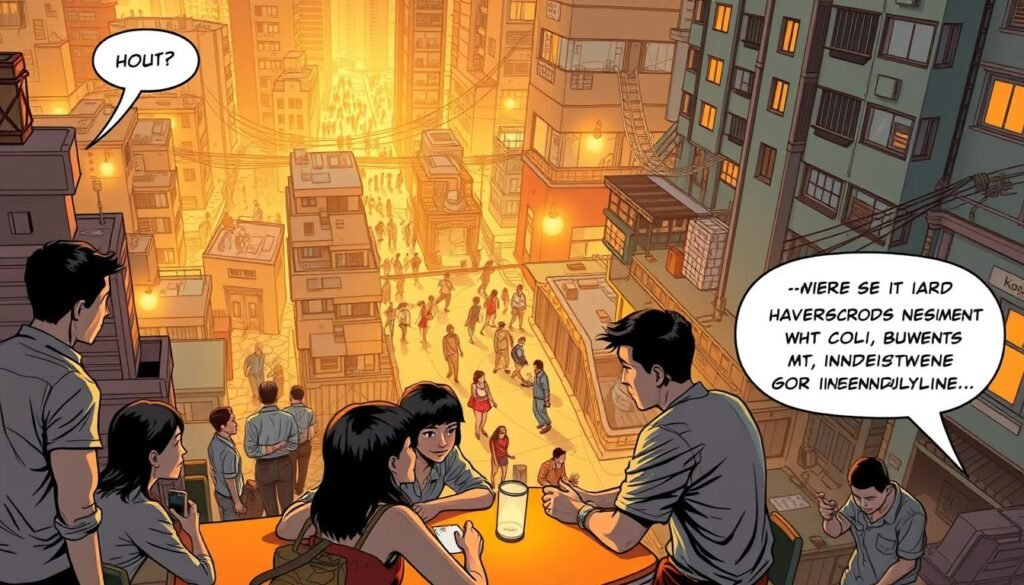
Here are some examples of successful support networks and allied help:
- The Polish resistance movement got a lot of help from the Allies during World War II.
- The French Resistance was supported by the British Special Operations Executive (SOE).
- The Philippine guerrilla movement got help from the United States and other Allies during World War II.
These examples show how important support networks and allied assistance are. They help underground resistance movements reach their goals.
Impact on Modern Military Strategy
The growth of underground resistance movements has changed modern military strategy a lot. They focus on fighting guerrilla warfare and other tactics that are not traditional. This has made regular military forces rethink their plans and find new ways to fight back.
Resistance movements have made a big difference in how military strategies are made today. New tech and tactics, like precision-guided bombs and cyber attacks, have been developed. Also, the rise of guerrilla warfare by groups not tied to a country has led to more focus on stopping insurgencies and terrorism.
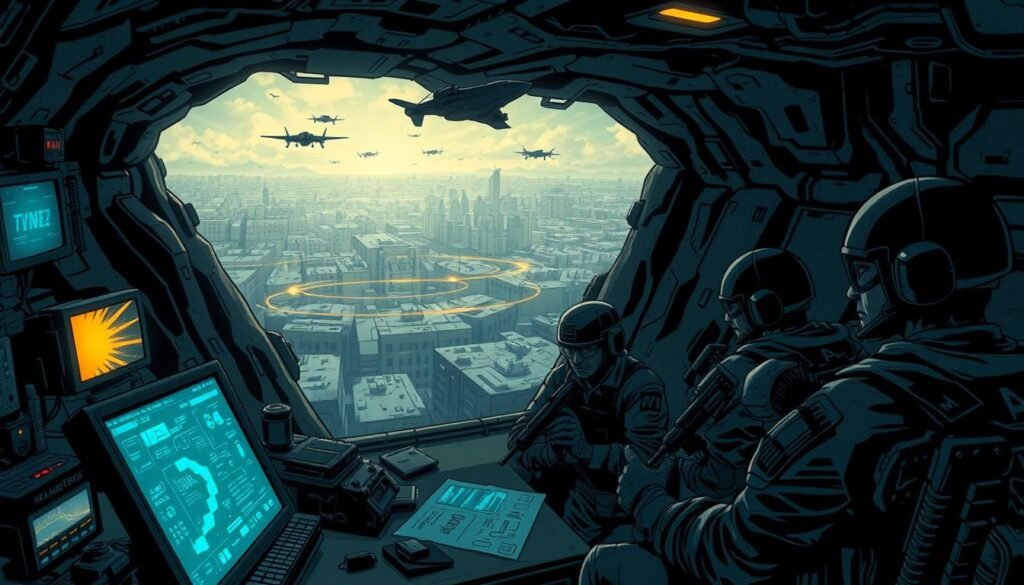
Using modern military strategy in operations is now key to dealing with the changing world of war. As war keeps evolving, the role of resistance movements in shaping military strategies will keep being important for those planning and strategizing.
Cultural Influence and Legacy
The underground resistance movement has deeply influenced literature and arts. Many artists and writers find inspiration in its courage and resilience. The legacy of this movement is celebrated in countless works of art and literature.
Books, films, and songs tell the story of this movement. Harriet Tubman, who freed 70 enslaved people, is a famous example. Her story is honored in many art and literature pieces. Museums and cultural institutions also keep its history alive.
This movement has shaped social memory and education. It’s a key part of school curricula. It also inspires institutions fighting for equality and justice.

The movement’s legacy is seen in cultural expressions. For example, the Fisk Jubilee Singers helped preserve traditional spirituals. Their work has greatly influenced music heritage.
Challenges and Ethical Considerations
Underground resistance movements face many challenges in their fight against oppressive regimes. One big concern is the ethical considerations of using violence. This can harm civilians. A study on resistance movements highlights the moral weight of such decisions.
Violence can start a cycle of retaliation and revenge, hurting innocent people. The cost of armed resistance is also high, with prices for a single revolver ranging from 3,000 to 15,000 zlotys. In contrast, hiding a Jew on the Aryan side cost between 2,000 to 5,000 zlotys, depending on appearance and gender.
Some of the key challenges faced by resistance movements include:
- Participant risks: The risk of harm or death to participants in the resistance movement.
- State permissions and lying to authorities: The need to obtain permission from authorities while also hiding the true nature of the resistance movement.
- Personal risk and privilege: The risk of personal harm or death to individual members of the resistance movement.
- Anonymity: The need to maintain anonymity to avoid detection by authorities.
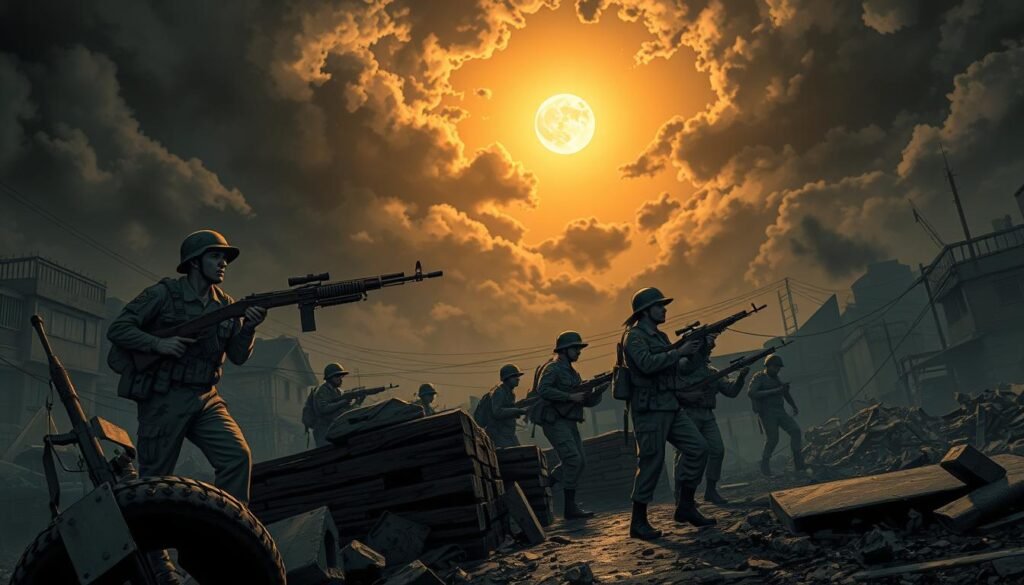
Resistance movements must weigh these ethical considerations and moral implications when planning. This helps them avoid harming civilians and ensures their actions are justified and necessary.
Modern Underground Resistance Movements
The idea of underground resistance has changed a lot over time. Today, groups use new ways to reach their goals. For example, the Ukrainian resistance against Russian occupation is a big deal. It shows how tactics have evolved.
They use digital media and social networks for spreading their message. This is a big change from old times. Learn more about this evolution.
Getting help from outside is key for these groups. Ukraine, for instance, has received a lot of support from other countries. Their main job is to gather and send out important information. They also do sabotage and direct actions, but mostly they focus on gathering intel.
Some key traits of today’s underground resistance include:
- Using digital media and social networks for propaganda
- Putting a lot of effort into gathering and sending information
- Doing fewer direct actions because of the risk of being found out
- Getting help from other countries is very important
In summary, modern underground resistance groups, like those in Ukraine, show how tactics have changed. They use new ways to fight back because of new technology and society changes. This shows how these groups can adapt and keep fighting.
Preservation of Underground Resistance History
Keeping the history of underground resistance alive is key to understanding its impact. By documenting these events, we learn about the battles and victories of those who opposed tyranny. The French Resistance in World War II is a prime example. Their fight against the Nazis shows the importance of preservation in keeping our history alive.
Many groups and individuals are working hard to save underground resistance history. They focus on keeping artifacts, documents, and stories alive. This helps us see what life was like during those times. By supporting these efforts, we make sure the stories of underground resistance are not forgotten.
For example, the National Underground Railroad Network to Freedom Program has been around for over 25 years. It has over 800 listings across 41 states, Washington D.C., and the U.S. Virgin Islands. These listings give us a peek into the secret networks of underground resistance from the 19th century. They show why preservation is crucial for our shared heritage.
Conclusion
The underground resistance movement has been key in wartime occupation. It has shaped societies and public opinions. As shown in the historical analysis of occupied areas, global conflicts have changed political plans.
Looking at resistance movements in France and Poland, we see their role. They aimed for national unity and social goals. Their complex structures and actions have influenced military strategies and culture.
In summary, studying underground resistance movements helps us understand wartime occupation. It shows how these movements have shaped societies. By learning from their history, we see the value of unity and social goals in changing public opinion and history.
FAQ
What is an underground resistance movement?
An underground resistance movement is a secret effort to fight against an oppressive regime or social injustice. They use tactics like guerrilla warfare and sabotage.
What are the key driving factors behind underground resistance movements?
Factors like oppressive regimes, occupation, and social injustice drive these movements. They cause widespread discontent and a desire for change.
What is the role of ideology in underground resistance movements?
Ideology shapes the goals and strategies of these movements. Different movements are driven by ideologies like nationalism, socialism, and liberalism.
How are underground resistance movements organized?
They are organized into leadership hierarchies. They have communication networks and recruitment methods to operate and achieve their goals.
What was the role of underground resistance movements in World War II?
In World War II, these movements contributed to the war effort. They used sabotage, espionage, and guerrilla warfare. This helped shape the war’s outcome.
What is the Filipino underground resistance movement?
During the Japanese occupation of the Philippines, this movement formed. Key organizations like the Hukbalahap and leaders like Jose Calugas played crucial roles.
What technologies and tactics are used by underground resistance movements?
They use guerrilla warfare, sabotage, and asymmetric warfare. They also use modern tools like social media and encryption.
How do underground resistance movements receive support and assistance?
They get support from international cooperation and resource management. Civilian support systems also help them with resources and expertise.
What is the impact of underground resistance movements on modern military strategy?
They have significantly impacted modern military strategy. The use of guerrilla and asymmetric warfare has forced conventional forces to adapt and develop new tactics.
What is the cultural influence and legacy of underground resistance movements?
Their stories and struggles are commemorated in literature, art, and education. Their impact on social memory and history is profound.
What are the challenges and ethical considerations faced by underground resistance movements?
They face challenges like the moral implications of violence and potential harm to civilians. These are difficult to navigate and require careful consideration.
What are modern underground resistance movements?
Modern examples include the Arab Spring and Occupy Wall Street. They use new technologies and tactics to challenge oppressive regimes and social injustices.
Why is it important to preserve the history of underground resistance movements?
Preserving their history helps us learn from the past. It allows us to understand the complexities of resistance and social change. It also honors the sacrifices and contributions of those who fought for freedom and justice.
Source Links
- Jewish Resistance
- Resistance movement
- Underground Resistance: Submerge Project | Vera List Center
- Resistance | Nazi Occupation, Collaboration & Liberation | Britannica
- Resistance during World War II
- Underground Resistance
- In Depth: Mark Flash Discusses the Philosophy behind Underground Resistance | fabric London
- How Underground Resistance Became the Public Enemy of Techno
- Basic Organizational Structures & Network Types
- Aboveground & Underground Groups | The DGR Book
- Research Guides: France in WW II: The French Resistance: Overview of the French Resistance
- ‘Resistance’: How underground forces sabotaged the Nazis – review
- The Phenomenon of the Polish Underground State
- The Evolution of Unconventional Warfare | Scandinavian Journal of Military Studies
- Urban Resistance to Occupation: An Underestimated Element of Land Warfare
- Historical Documents – Office of the Historian
- The Allied Responses to the Warsaw Uprising of 1944 | The National WWII Museum | New Orleans
- Impact of Technology on Conduct of Warfare
- Resistance and Resilience in Asia – Political Warfare of Revisionist and Rogue Powers | Small Wars Journal by Arizona State University
- The Return of Political Warfare
- Underground Resistance, Submerge, and the Detroit Way
- The Protest Legacy of African American Spirituals, Part 1
- Underground Resistance: Electronic Warfare For The Sonic Revolutions | The Quietus
- The Dilemma of Revolt, by S. Ochayon
- An Underground Resistance Movement for Ukraine
- Against the Odds: Lessons from the Ukrainian Resistance Movement
- Risking Their Lives to Defy Hitler (Published 2022)
- History of the Network to Freedom – Underground Railroad (U.S. National Park Service)
- Underground Railroad – NYS Parks, Recreation & Historic Preservation
- Ecologies of Resistance: The Underground Railroad Ethnobotany Project – AAIHS
- France – Resistance, WWII, Liberation | Britannica
- Unearthing Europe’s underground war against Hitler
- Exploring Resistance Operating Concept. Promises and pitfalls of (violent) underground resistance

